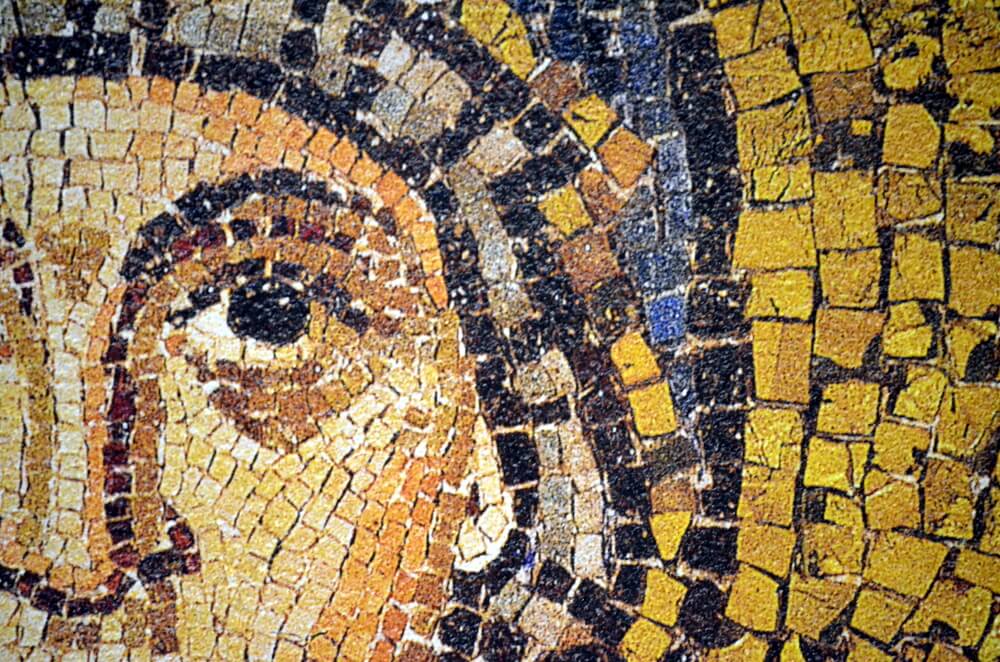If you’re travelling to a major city and looking to see the sights, you may find that you’ll discover more art and beauty in the local church than you would in the local museum. From St. Patrick’s in New York City, to Notre Dame in Paris, to St. Peter’s in Rome, these churches show that art has played an important role in the life of the Church since the beginnings of Christianity.
Churches built in modern times tend to place less of an emphasis on sacred art than churches built in centuries past, but not all. Fr. Thomas Loya, pastor of Annunciation Byzantine Catholic Church in Homer Glen, IL, is known as ‘The Michelangelo of the Midwest’ because he has been working for decades to cover his church in sacred art. Fr. Loya recently stopped by A Closer Look™ to discuss the importance of sacred art, and how it can bring us closer to Our Lord.
Fr. Loya told host Sheila Liaugminas about the Byzantine style of sacred art that he works with called iconography. He said that, “Iconography can be called, in a sense, like a sacrament. Because what is a sacrament? Sacraments make invisible, transcendent realities visible and tangible. In other words, we can enter into the mystery of the invisible God and of His truth.”
“Through art we do that,” he continued. “And Byzantine iconography follows certain canons, styles, and guidelines, because what you’re doing is you’re essentially painting theology in color. You’re essentially communicating the truth, the Church’s teaching, the Scripture, and so on. We get the Word of God by reading images, by reading print on a page. That’s the Bible, the communicated Word of God. Well, this is communicating the word of God through line and color.”
Fr. Loya also explained that sacred art in churches is particularly important, because it helps us to more fully enter into the reality of what is taking place at each Mass.
“The idea is that you’re entering into another reality, the heavenly reality,” he said. “Just surrounded by all the angels and saints, Christ, the Virgin Mary. And you’re literally moving from one reality into the next. Whenever we’re at Mass or liturgy, we actually take our place along the angels and saints in heaven, that our liturgy on earth joins the liturgy in heaven. And one of the things that links those two things, that gives a sense of that, that immerses us in that, is the art of the Church.”
“What you see in the Church is linking you to what is happening in heaven. This is why the Byzantine art form is very pedagogical, but it is also very sacramental. It’s mystical, it’s revealing what is hidden, it is making visible what is invisible. It makes God, and all the heavenly realities tangible to us through that line and color. So it’s a very, very special art form.”
When it comes to sacred art, a common complaint is that the Church spends money on works of art when that money could go toward helping those in need. And while serving the poor is an important part of the Church’s mission, the art of the Church is not merely decorative, but it also helps fulfill the Church’s mission by making God tangible, and helping us enter more fully into the Incarnation.
“All the art of the Church, East and West, is really based on that fundamental principle – that it’s incarnational,” Fr. Loya said. “God made Himself visible by taking on human flesh in the person of Jesus Christ. That’s why the Church can have images. In fact, that’s why we must have images. Because as God has made Himself visible to us, tangible to us, we can touch God and unite Him with our very being. Most importantly through the Eucharist, but also through every aspect of the Church. Because God has done that, it’s not only that we should, but we must portray Him in images. We must portray that reality through images so that we are immersed in that heavenly reality. We actually can touch God through the sacred art of the Church.”
Listen to the full conversation with Fr. Thomas Loya at the A Closer Look podcast.


